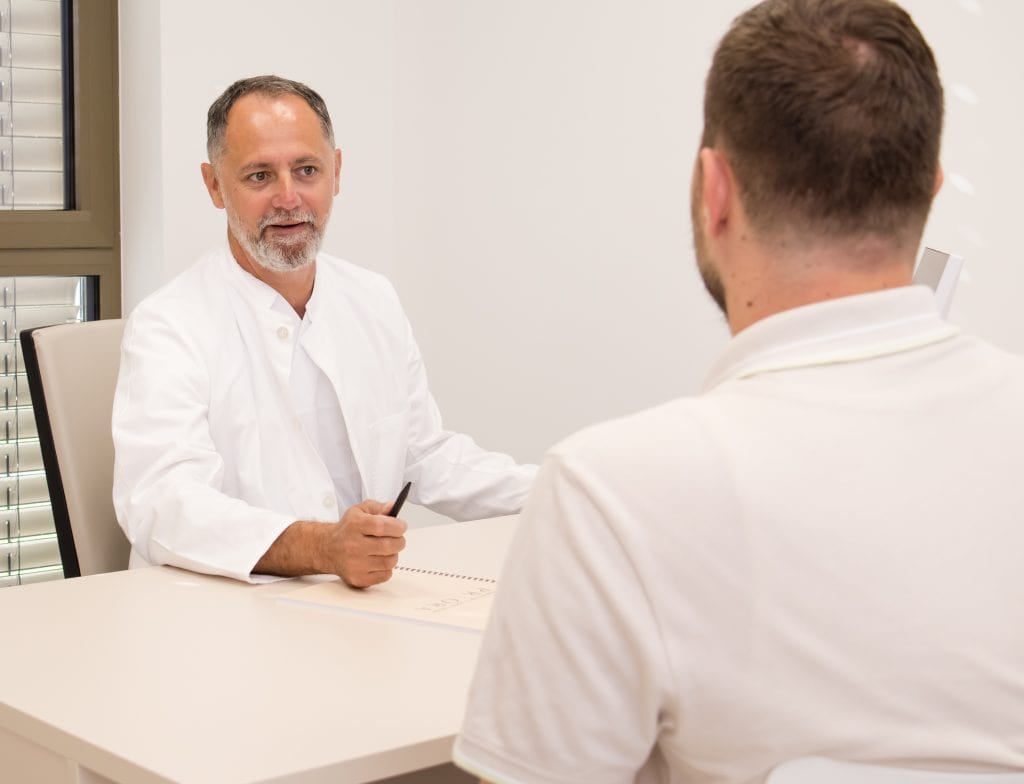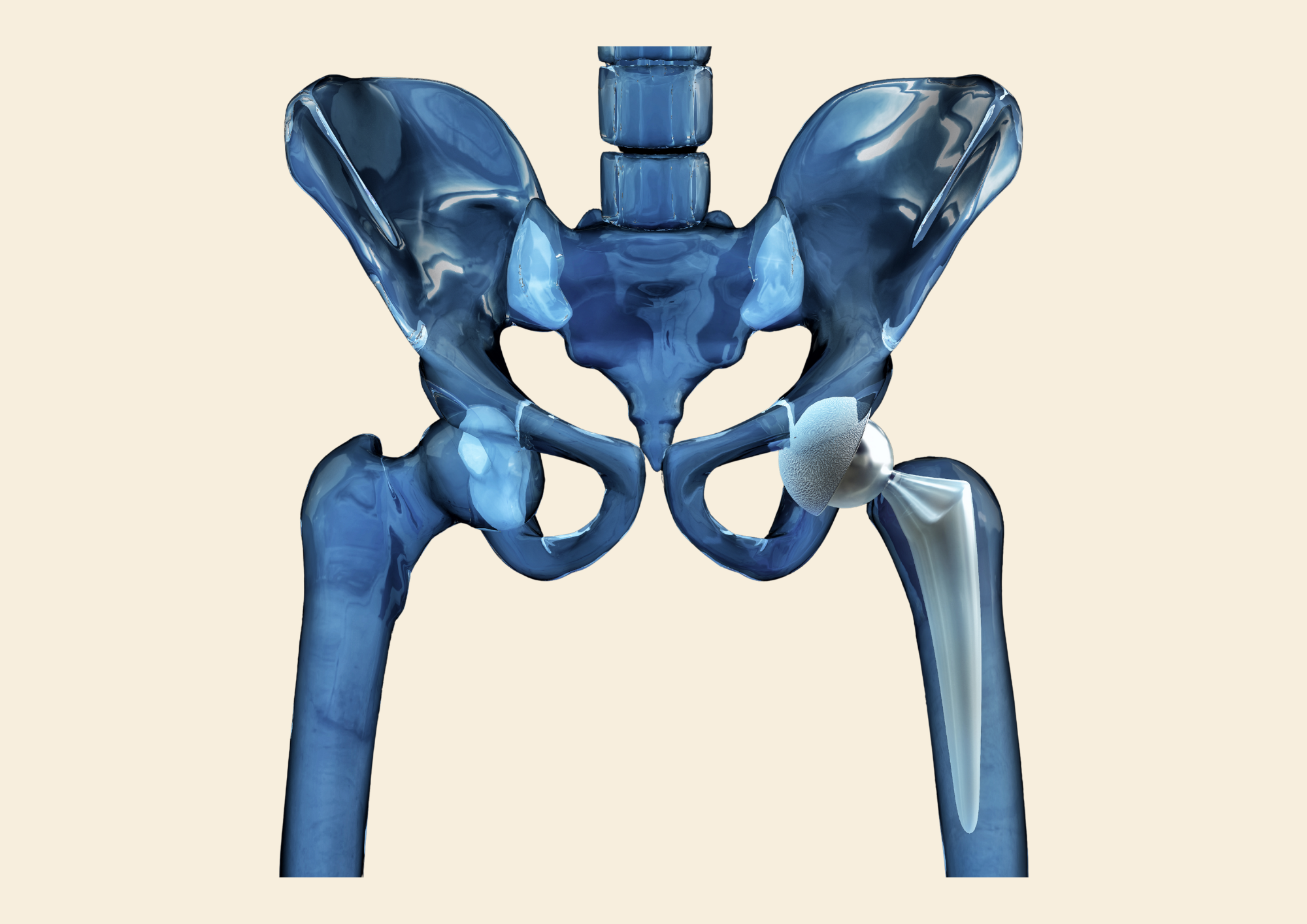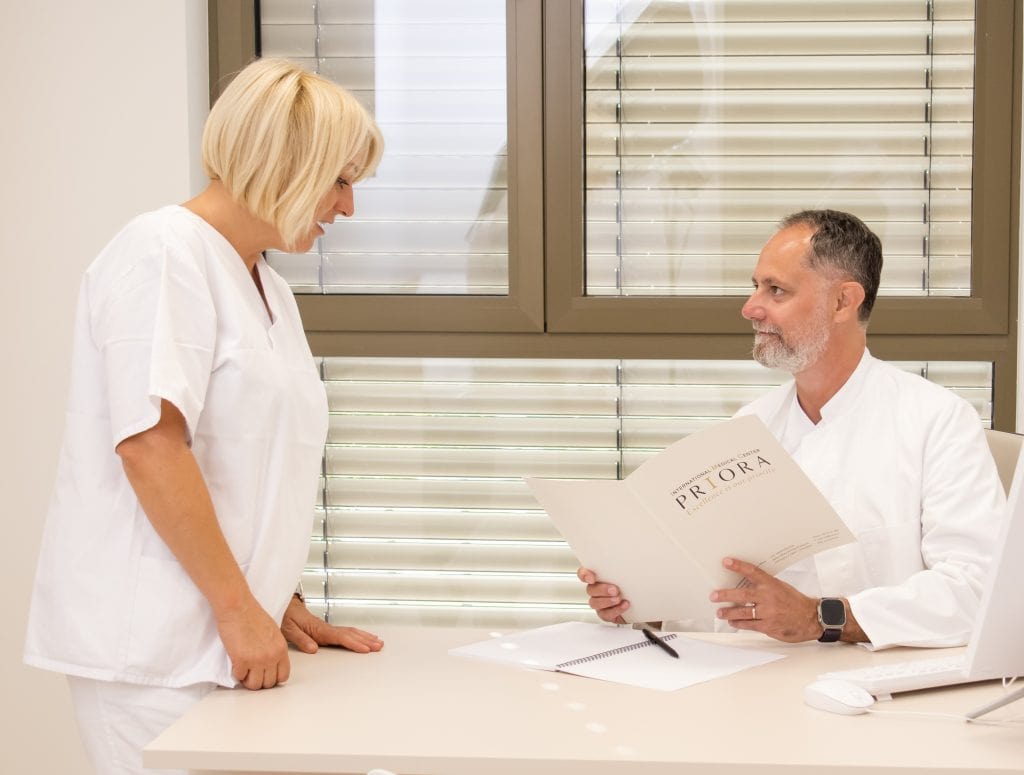Hip, knee, or shoulder endoprosthesis implantation is no longer something to fear. Thanks to minimally invasive surgical techniques and the use of modern, high-quality implant designs, patients today quickly return to their usual activities and a pain-free life.
Still, some myths persist among the public. Orthopedic surgeon and traumatologist Dr. Ivan Karlak, Head of the Orthopedic Department at IMC Priora, explains the most common misconceptions about joint replacement surgery.
Can patients return to everyday life after hip replacement?
“Thirty or fifty years ago, there was a belief that once a person had an artificial hip implanted, they could no longer live normally — they had to be constantly cautious, unable to squat, kneel, or run. Those are outdated notions that no longer apply.
The goal of hip replacement surgery is to allow the patient to return to an everyday, unrestricted life after the procedure and rehabilitation. People with artificial hips ski, play tennis, even football — there are absolutely no limitations when it comes to movement or activity.”

How is that possible?
“There are two main reasons. First, the design and materials of modern endoprostheses have advanced significantly. Second, and perhaps even more importantly, surgical techniques have evolved.
In the past, to implant an artificial hip, we had to cut through all the muscles to access the joint, place the prosthesis, and then stitch the muscles back together. Because of this, patients couldn’t put weight on the operated leg for six to eight weeks, until the muscles fully healed. Only after that could rehabilitation begin.
However, once a muscle has been cut and sewn, it never regains its full original function.
Today, we don’t cut muscles — we separate them to reach the joint and implant the prosthesis. Thanks to this approach and improved implant design, patients can stand on their operated leg with full weight on the very first postoperative day. Crutches are used only for balance or mild discomfort from the incision, but the patient immediately begins walking and starts intensive physical therapy to strengthen the muscles. With these techniques, postoperative pain is significantly reduced, recovery is faster, and joint function is much better than it used to be.”

How long does a hip endoprosthesis last?
“A high-quality hip prosthesis today lasts more than 25 years. It is a long-term and reliable solution that allows patients to live normally for two or even three decades. When the implant eventually wears out, it can be replaced — just like any other worn part.”
Does physical activity cause faster wear of the prosthesis?
“No. That is another myth that needs to be dispelled. Physical activity does not accelerate wear. I always encourage my patients to live normally and forget they even have an artificial hip. When issues arise years later, we’ll deal with them then. Who knows where medicine will be in 25 years?
The goal of hip replacement surgery is to help patients live freely and without limitations. Thanks to new surgical methods and prosthetic designs, it is now even possible to replace both hips during a single procedure. This is much more convenient for the patient — one anesthesia, one recovery, and a complete return to everyday life after rehabilitation. Hip replacement is a low-risk procedure, with complications occurring in less than one percent of cases.”
